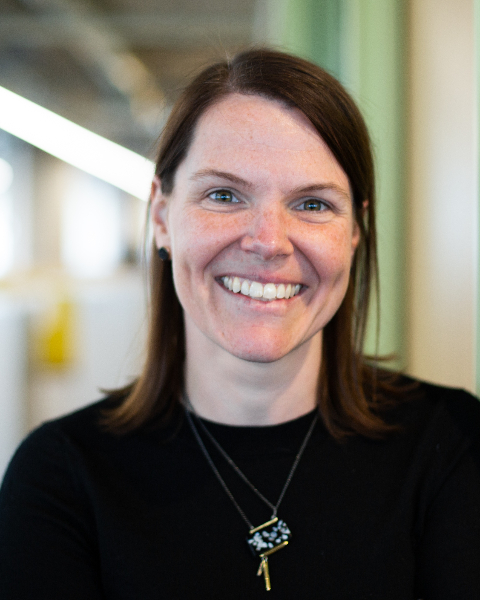PQA 01 - PQA 01 Lung Cancer/Thoracic Malignancies and Diversity, Equity and Inclusion in Healthcare Poster Q&A
2003 - Understanding Equity, Diversity and Inclusion within Canadian Radiation Oncology: Experiences of Residents and Fellows
Sunday, September 29, 2024
2:45 PM - 4:15 PM ET
Location: Hall C
Screen: 5

Jennifer Croke, MD, MHPE
Princess Margaret Cancer Centre
York, ON, Canada
Presenter(s)
S. Allen1, A. Khan2, J. G. Ringash1, R. Jagsi3, D. Bowes4, Z. Liu5, I. J. Gerard6, G. Bandiera7, S. Loewen2, and J. M. Croke1; 1Department of Radiation Oncology, Princess Margaret Cancer Centre, University of Toronto, Toronto, ON, Canada, 2Department of Oncology, University of Calgary, Calgary, AB, Canada, 3Department of Radiation Oncology, University of Michigan, Ann Arbor, MI, 4Nova Scotia Health Authority, Halifax, NS, Canada, 5Department of Biostatistics, Princess Margaret Cancer Centre, University Health Network, Toronto, ON, Canada, 6McGill University Health Centre, Montreal, QC, Canada, 7Department of Medicine, University of Toronto, Toronto, ON, Canada
Purpose/Objective(s): Equity, diversity and inclusion strategies promote a positive and healthy environment in which to work and learn. We evaluated the sociodemographic characteristics and lived experiences of radiation oncology residents and fellows in Canada. Materials/
Methods: Following literature review and input from content and methodological experts, an ethics-approved survey was created in English and French. The survey included 56 items under: Sociodemographics, Job Perceptions, Mentorship, Academics, Discrimination and Harassment. Electronic surveys (N=177) were distributed via email to all Canadian radiation oncology residents/fellows using a data collection web application. Descriptive statistics summarized survey responses. Comparisons between categorical groups were performed using Chi-square and Fisher’s exact tests. Univariable logistic regression identified factors associated with respondents considering transferring to a different training program.
Results: Between July and Dec 2023, 98 trainees responded (56% response rate). Of these, 70% were residents, 29% were International Medical Graduates (of which 86% were fellows), 83% were 25-34 years old, 52% self-reported as male, 61% as a visible minority, 10% as 2SLGBTQIA+, 3% as a gender minority (e.g. non-binary), and 4% with a disability. The majority reported satisfaction with their training program (83%; 78/94) and a respectful workplace culture (69%; 64/93). However, 40% (37/92) reported they have considered transferring to a different training program. Factors associated with an increased likelihood of considering transfer were dissatisfaction with current mentorship (p=0.002), perceived equity and diversity obstacles (p=0.028), and personal experience with discrimination (p=0.025) or harassment (p=0.049). At least one episode of discrimination during training was reported by 38% (28/75), primarily due to gender (16%; 16/98) and race (15%; 15/98). At least one episode of harassment was reported by 18% (18/98), most commonly by a patient/family member (9%; 9/98). Less than half (45%) felt comfortable reporting discrimination/harassment. Women were more likely to feel under-represented in their training program (46% vs. 13%, p=0.001) and perceived more discrimination events (64% vs. 19%, p<0.001), whereas male respondents felt more comfortable reporting harassment incidents (60% vs. 26%, p=0.01). Harassment events were more commonly perceived by Canadian medical graduates than International medical graduates (26% vs. 0%, p<0.001).
Conclusion: We clarified the current representation of select sociodemographic groups within Canadian radiation oncology training programs. Although the majority reported satisfaction and a respectful culture within their programs, key differences between groups were observed, including experiences with discrimination and harassment. Targeted strategies to improve representation and reduce rates of discrimination and harassment are needed.
Purpose/Objective(s): Equity, diversity and inclusion strategies promote a positive and healthy environment in which to work and learn. We evaluated the sociodemographic characteristics and lived experiences of radiation oncology residents and fellows in Canada. Materials/
Methods: Following literature review and input from content and methodological experts, an ethics-approved survey was created in English and French. The survey included 56 items under: Sociodemographics, Job Perceptions, Mentorship, Academics, Discrimination and Harassment. Electronic surveys (N=177) were distributed via email to all Canadian radiation oncology residents/fellows using a data collection web application. Descriptive statistics summarized survey responses. Comparisons between categorical groups were performed using Chi-square and Fisher’s exact tests. Univariable logistic regression identified factors associated with respondents considering transferring to a different training program.
Results: Between July and Dec 2023, 98 trainees responded (56% response rate). Of these, 70% were residents, 29% were International Medical Graduates (of which 86% were fellows), 83% were 25-34 years old, 52% self-reported as male, 61% as a visible minority, 10% as 2SLGBTQIA+, 3% as a gender minority (e.g. non-binary), and 4% with a disability. The majority reported satisfaction with their training program (83%; 78/94) and a respectful workplace culture (69%; 64/93). However, 40% (37/92) reported they have considered transferring to a different training program. Factors associated with an increased likelihood of considering transfer were dissatisfaction with current mentorship (p=0.002), perceived equity and diversity obstacles (p=0.028), and personal experience with discrimination (p=0.025) or harassment (p=0.049). At least one episode of discrimination during training was reported by 38% (28/75), primarily due to gender (16%; 16/98) and race (15%; 15/98). At least one episode of harassment was reported by 18% (18/98), most commonly by a patient/family member (9%; 9/98). Less than half (45%) felt comfortable reporting discrimination/harassment. Women were more likely to feel under-represented in their training program (46% vs. 13%, p=0.001) and perceived more discrimination events (64% vs. 19%, p<0.001), whereas male respondents felt more comfortable reporting harassment incidents (60% vs. 26%, p=0.01). Harassment events were more commonly perceived by Canadian medical graduates than International medical graduates (26% vs. 0%, p<0.001).
Conclusion: We clarified the current representation of select sociodemographic groups within Canadian radiation oncology training programs. Although the majority reported satisfaction and a respectful culture within their programs, key differences between groups were observed, including experiences with discrimination and harassment. Targeted strategies to improve representation and reduce rates of discrimination and harassment are needed.
